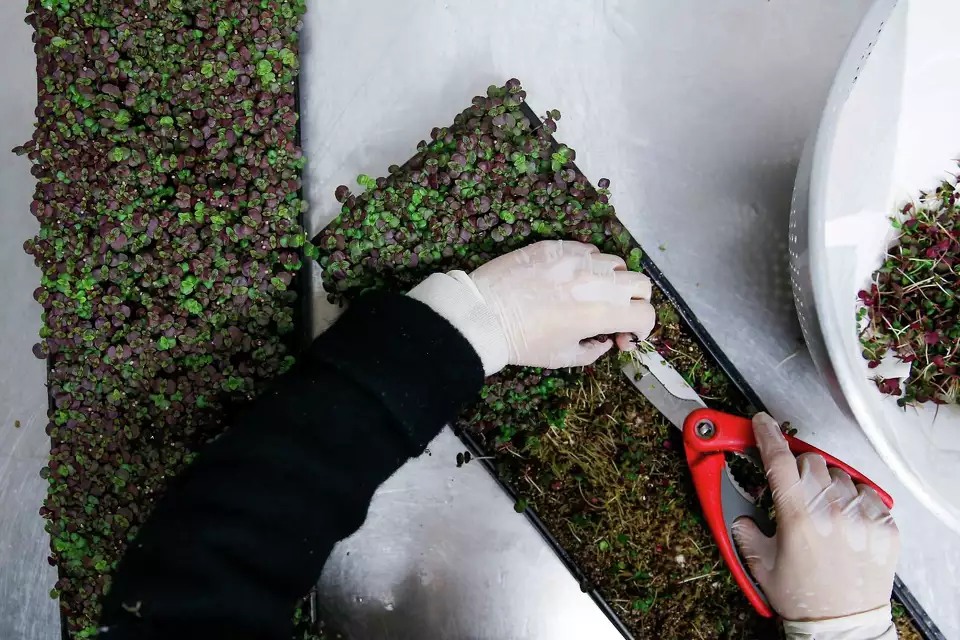Most people assume hydroponic tomatoes can’t hold a candle to soil-grown fruit—hydroponics is often grouped with “grocery-store bland,” while backyard or small-farm heirlooms carry the flavor crown.
But research tells a more nuanced story: hydroponics doesn’t just keep up—it often delivers sweeter, more consistent, and more colorful tomatoes than soil-grown fruit. Still, under ideal conditions, soil-grown tomatoes usually retain the crown for deepest, most complex flavor.
What’s Different About Hydroponics?
Hydroponics grows plants without soil, using mineral-rich water solutions and precise control over nutrients, pH, light, and irrigation. This allows for steady, high-quality production year-round, especially valuable in urban or off-season settings. Where soil-grown crops depend on weather and microbes, hydroponics offers control—and that control shapes flavor.
Want to learn how hydroponic systems control nutrients and light? Moonflower Farms in Houston offers an
class.What the Research Says About Flavor
Sweetness & Acidity (Sugar–Acid Balance)
- Hydroponic tomatoes often match—or even surpass—soil-grown counterparts in sweetness and acidity. One study reported hydroponic fruit with a higher sugar-to-acid ratio, a major driver of flavor perception¹.
- Another comparative trial showed hydroponic systems producing equal or higher soluble solids (°Brix) depending on cultivar².
Takeaway: Hydroponics reliably produces tomatoes that taste “good,” avoiding the flatness common in mass-market fruit.
Color & Aroma
- Controlled studies show hydroponic tomatoes often have richer color, firmer texture, and improved lycopene and β-carotene content, compared to soil-grown³.
- Sensory panels have rated hydroponic tomatoes as equal to or better than soil-grown when harvested ripe⁴.
Takeaway: Hydroponics can yield vibrant fruit with strong visual and flavor appeal—though soil systems still show the widest range of aromatic complexity.
Nutrients, Antioxidants & Minerals
- A 2024 Ecuadorian study comparing conventional, organic, and hydroponic tomatoes found no significant differences in antioxidants like lycopene and vitamin C, or in minerals like potassium⁵.
- Still, some evidence suggests organic soil systems edge ahead in phenolics and antioxidant values, depending on cultivar and season⁶.
Takeaway: Hydroponic tomatoes aren’t nutritionally inferior, but organic soil-grown produce may sometimes hold an advantage in antioxidant richness.
Resource Use & Efficiency
- Hydroponic systems use significantly less water and fertilizer than conventional soil-based production, while still delivering comparable or higher quality fruit².
Flavor vs. Consistency — The Practical Trade-Off
| FeatureHydroponic TomatoesSoil-Grown Tomatoes | ||
| Flavor Reliability | Consistent; usually better than grocery store | Variable; sometimes extraordinary, sometimes bland |
| Peak Flavor Potential | Solid, dependable flavor | Highest complexity under ideal conditions |
| Shelf Life & Texture | Longer shelf life; firmer, more colorful fruit | Shorter shelf life; best eaten vine-ripened |
| Nutritional Profile | Comparable overall; antioxidants slightly lower in some studies | Often higher phenolics (esp. organic) |
| Resource Efficiency | High water and fertilizer efficiency | Less efficient; dependent on soil and weather |
So Which One Really Tastes Better?
If reliability matters—especially in off-season or urban settings—hydroponics is a clear winner. A hydroponic tomato grown in mid-winter can easily outperform a bland, cross-country grocery tomato.
But if you’re lucky enough to taste a perfectly ripe, small-farm tomato in peak summer? Science suggests that’s still the flavor champion.
Why This Matters for Local Food
Hydroponic farming isn’t flavor’s adversary—it’s part of a resilient food future. Hydroponic systems bring fresh, dependable flavor into cities year-round. Soil-grown farms deliver the seasonal bursts of complexity we crave in summer.
Both approaches have a role in shaping how we eat, shop, and connect to local farms.
Also Read
References
- Islam, M.Z., et al. (2021). Controlled comparisons between soil and hydroponic systems reveal increased water use efficiency and higher lycopene and β-carotene contents in hydroponically grown tomatoes. Scientia Horticulturae. https://doi.org/10.1016/j.scienta.2020.109721
- Dorais, M., et al. (2013). Comparative performance of tomato on soilless vs. in-soil production systems.Agricultural Water Management. https://doi.org/10.1016/j.agwat.2013.06.011
- Bhattacharya, P., et al. (2025). Quality and yield performance of hydroponically grown tomatoes compared to soil-based systems. Journal of Plant Nutrition. https://doi.org/10.1080/01904167.2025.2506687
- Gómez, R., et al. (2021). Aroma and carotenoid profiles of hydroponically vs. soil-grown tomatoes. Applied Sciences. https://doi.org/10.3390/app11178012
- Vélez-Terreros, M., et al. (2024). Nutritional quality of conventional, organic, and hydroponic tomatoes in Ecuador.Foods. https://doi.org/10.3390/foods13112074
- Same study as above, reporting higher phenolic content in organic soil-grown samples.






